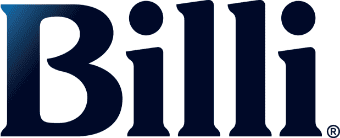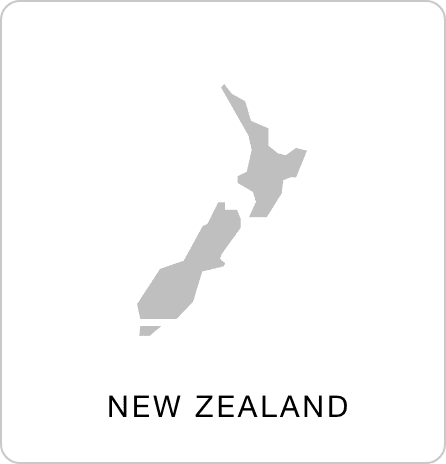Newest
Popular
Products
Can’t find what you are looking for, please call 1800 812 321 or email us on info@billi.com.au
Billi Media
Working in an isolated digital world
The COVID-19 pandemic has made design and construction companies adapt to a new era of workplace flexibility. More employees are working from home, with less people in the office at any given time. Travelling to key markets to meet with clients is a less common occurrence due to difficulties with travel and quarantine restrictions. A growing number of people are making
the move out of city centres and working in remote locations, leveraging digital technology as a way to remain connected to their working life.
However, for many workers, the shift towards remote working is not without its challenges. Loneliness, time management problems, increased feelings of isolation and digital miscommunication are only some of the problems employees face working from home for extended periods of time. Companies who fail to address these issues directly face a workforce whose motivation and productivity are significantly reduced.
As a collaborative practice, architecture, design and construction are acutely impacted by these issues. Face-to-face interaction, whether in a studio or on a construction site, is key to the production of a good design. Without effective solutions to connect remote employees, projects risk costly mistakes, project delays and poor quality outcomes. This can lead to unhappy employees, making it difficult for companies to attract and retain high-performing team members.
With today’s teams increasingly dispersed, developing ways to maintain and build motivation and productivity is more important than ever. A growing number of interactive tools are helping design and construction professionals streamline project delivery while enhancing collaboration and human connection both within the organisation and with external clients and stakeholders.
Bridging the digital divide
From design through to construction, the importance of collaboration is paramount. Projects involve a wide range of stakeholders, all of different backgrounds, skills and knowledge levels. Meaningful communication is important to ensure all aspects of a project remain coordinated and stakeholders are all working towards a shared objective.
New digital tools are not only imperative to allow team members to communicate and to achieve tasks, but also to maintain motivation and focus through human connection. Tools such as Zoom, Microsoft Teams and Slack have been used to allow face-toface interactions and foster dynamic team discussion.
Newer platforms such as Miro, a collaborative whiteboarding platform, present further opportunities to embed collaborative practices among distributed teams. Asana and Jira, already commonly used by software companies, can also be adapted to help coordinate team management and project tracking.
The architecture industry has long been designing digitally, with Building Information Modelling (BIM) and Computer-Aided Design (CAD) tools such as AutoCAD and Revit making significant advances over the years. BIM collaboration tools represent another important step in digital design, providing the ability to track issues and include questions, comments and requests for information within the BIM platform. This capability enables project stakeholders to share, review, and comment on data-rich building models in real time, and create a single source of truth for
architectural, engineering and construction teams.
When team members are distributed geographically, with no access to the actual building site, this is key to minimising errors and miscommunication.
Virtual and augmented reality software tools are increasingly being used by companies to further build capacity in remote teams. Virtual reality (VR) is software that creates an immersive, simulated experience, whereas augmented reality (AR) adds digital elements to a real-life environment. Digital tools that use VR or AR allow design teams to collaborate in 3D environments. A building or structure can be simulated digitally, and users can immerse themselves within it before it is constructed. This allows teams to test run ideas before construction work has started.
VR and AR can greatly benefit clients, as they can be walked through simulated environments and decide whether it meets their requirements.
Artificial intelligence (AI) has the potential to streamline projects and help stakeholders deliver greater value to clients. AI refers to technology that mimics human cognitive functions, like problem-solving and pattern recognition. Applied to construction, AI can analyse construction data and apply those learnings to individual projects. Predicting cost overruns, project planning and improving scheduling and productivity are some of the potential applications. Software can be programmed to analyse performance requirements and generate the optimal building design, resolving any clashes between architecture, engineering, mechanical, electrical, and plumbing models.
Digital Tools & Resources
Billi is a leading Australian manufacturer and supplier of high quality drinking water and washroom systems.
The Billi brand is synonymous with Australian innovation, providing products of uncompromising quality. Billi’s range of superior instant filtered water systems are suitable for a wide range of professional applications and environments.
Billi is at the forefront of digital transformation, providing architects, designers and builders with digital tools and libraries for all their specification and installation needs.
For easy reference and accessibility, Billi provides a central online information repository of technical documentation, including Data Sheets, BIM Files, Install and User Guides, Warranties and
Certifications. This comprehensive library provides valuable assistance for every project stage, from pre-design and construction through to operation.
The Billi BSPEC Generator allows users to quickly identify the Billi solution that best meets their project requirements. Select the combination required, how many users, preferred dispenser type and whether there is an optional hot and cold mixer required, and this interactive online tool presents to you the most suitable instant filtered water system. By guiding you step by step to find the ideal system, the SPEC Generator is a valuable time-saver.
A key innovation in the design and specification process, Billi’s 3DBuild tool provides the same level of technical information as the BSPEC Generator with additional 3D visualisations. In a few simple steps, you can see how your chosen product profile interacts with the environment by customising your preferred underbench module, dispenser installation and finish option alongside 12 popular benchtops and 10 trendleading joinery colour palettes. Full document sets are available in conjunction with your specification and additional features to support product specifi cation and document collation are soon to be released.
These digital tools are supported by Billi’s world class customer service experience. Billi offers comprehensive customer care with their Australia-wide network of trained service technicians and service agents providing technically correct, prompt and reliable service.
FULL ARTICLE: ARCHITECTURE & DESIGN WHITEPAPER FLIPBOOK
CATEGORIES
ARCHIVES
- April 2025
- March 2025
- February 2025
- January 2025
- December 2024
- November 2024
- October 2024
- September 2024
- August 2024
- July 2024
- June 2024
- May 2024
- April 2024
- March 2024
- February 2024
- November 2023
- September 2023
- June 2023
- April 2023
- March 2023
- January 2023
- December 2022
- November 2022
- October 2022
- July 2022
- June 2022
- April 2022
- March 2022
- January 2022
- December 2021
- November 2021
- October 2021
- September 2021
- August 2021
- July 2021
- June 2021
- November 2020
- June 2020
- February 2020
- January 2020
- November 2019
- October 2019
- September 2019
- July 2019
- April 2019
- March 2019
- February 2019
- November 2018
- May 2018
- February 2018
- October 2017
- May 2017
- January 2017
- October 2016
- September 2016
- April 2015
- March 2015
- November 2014
- October 2014




